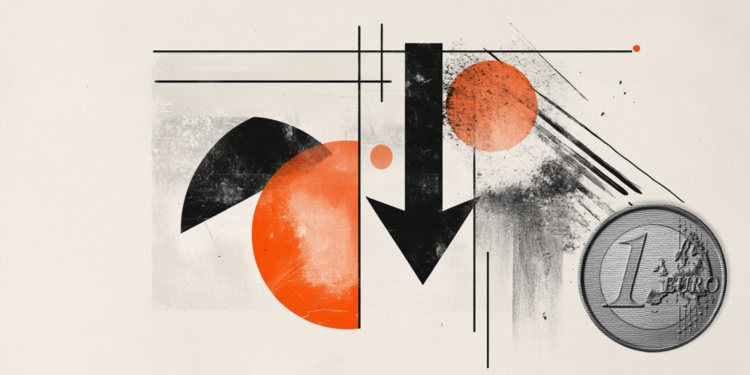- EUR/GBP softens to around 0.8285 in Wednesday’s early European session.
- UK CPI inflation rose to 3.0% YoY in January vs. 2.8% expected.
- The dovish stance from the ECB might drag the Euro lower.
The EUR/GBP cross weakens to near 0.8285 during the early European trading hours on Wednesday. The Pound Sterling (GBP) edges higher against the Euro (EUR) after the hotter-than-expected UK Consumer Price Index (CPI) inflation data for January. Later on Wednesday, the Eurozone Current Account will be released.
Data released by the United Kingdom’s Office for National Statistics on Wednesday showed that the country’s headline CPI rose 3.0% YoY in January, compared to a 2.5% increase in December. This reading came in hotter than the 2.8% expected. The Core CPI, which excludes the volatile prices of food and energy, climbed 3.7% YoY in January versus 3.2% prior, in line with the market consensus of 3.7%.
Meanwhile, the monthly UK CPI inflation fell to -0.1% in January from +0.3% in December. Markets projected a -0.3% reading. The Pound Sterling holds steady in an immediate reaction to the upbeat UK CPI inflation data.
Slower growth in the Eurozone triggered the expectations of further interest rate reductions from the European Central Bank (ECB), which might weigh on the shared currency. Analysts expect the European Central Bank (ECB) to deliver quarter-point cuts at every meeting until mid-2025. That would bring the deposit rate to 2.0%
Inflation FAQs
Inflation measures the rise in the price of a representative basket of goods and services. Headline inflation is usually expressed as a percentage change on a month-on-month (MoM) and year-on-year (YoY) basis. Core inflation excludes more volatile elements such as food and fuel which can fluctuate because of geopolitical and seasonal factors. Core inflation is the figure economists focus on and is the level targeted by central banks, which are mandated to keep inflation at a manageable level, usually around 2%.
The Consumer Price Index (CPI) measures the change in prices of a basket of goods and services over a period of time. It is usually expressed as a percentage change on a month-on-month (MoM) and year-on-year (YoY) basis. Core CPI is the figure targeted by central banks as it excludes volatile food and fuel inputs. When Core CPI rises above 2% it usually results in higher interest rates and vice versa when it falls below 2%. Since higher interest rates are positive for a currency, higher inflation usually results in a stronger currency. The opposite is true when inflation falls.
Although it may seem counter-intuitive, high inflation in a country pushes up the value of its currency and vice versa for lower inflation. This is because the central bank will normally raise interest rates to combat the higher inflation, which attract more global capital inflows from investors looking for a lucrative place to park their money.
Formerly, Gold was the asset investors turned to in times of high inflation because it preserved its value, and whilst investors will often still buy Gold for its safe-haven properties in times of extreme market turmoil, this is not the case most of the time. This is because when inflation is high, central banks will put up interest rates to combat it. Higher interest rates are negative for Gold because they increase the opportunity-cost of holding Gold vis-a-vis an interest-bearing asset or placing the money in a cash deposit account. On the flipside, lower inflation tends to be positive for Gold as it brings interest rates down, making the bright metal a more viable investment alternative.
Read the full article here


